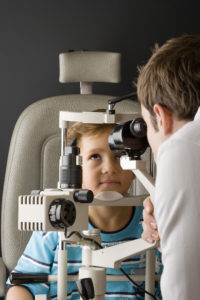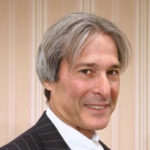August 1, 2020
By Jack L. Schaeffer, OD, FAAO
 Every eye care professional must decide which model of myopia care is best suited for themselves and their practice.
Every eye care professional must decide which model of myopia care is best suited for themselves and their practice.
We have been well trained in co-management of ocular disease and surgery: cataract surgery, glaucoma, LASIK, and premium IOLs. We are already in the practice of correcting myopia with spectacles or contact lenses because at least 60 percent of our patients are myopic. However, what we have learned in the last 10 years is that childhood myopia can and should be managed more effectively than with just single-vision spectacles or conventional contact lenses. Myopia is not a benign ocular condition.
We also know that childhood myopia is usually progressive, and we now understand how to manage progression in most patients. We must practice at a level of care that puts vision and the long-term eye health of patients first. When you consider your philosophy of myopia care, you must understand the evidence-based data and clinical studies that are available to support your practice strategy. For example, the International Myopia Institute (IMI) White Papers are an excellent source of peer-reviewed knowledge on all aspects of myopia.
Here are three models of care that are potential options in the management of childhood myopia.
Model 1: Education and referral to a qualified colleague
When a child is diagnosed with myopia, we have the obligation and duty to educate (through staff, pamphlets, or video), explain the concept of reducing the progression of myopia to the parent(s), and determine which model of care is appropriate and acceptable to the family. It is always challenging to educate your patient on a new private-pay procedure. Education on a modern philosophy of myopia care becomes complicated as patients expect their vision care and major medical insurance to cover all treatments; we all know this issue. The practice needs to develop a standard operating procedure to handle these objections. Model #1 allows us to give the best care without including more advanced myopia management procedures into the practice. The eye care professional in Model #1 should:
- Educate children on proper visual hygiene, i.e., 20-20-20 Rule, proper working distance, play a minimum of two hours per day outdoors in sunlight, etc.
- A basic pair of SV glasses or SV contact lenses: full prescription with ideally a six-month office visit to check for progression.
- Referral to a qualified colleague for a more comprehensive approach to myopia treatment.
I know you are thinking, “I will lose the patient if I refer them to another optometrist.” This is not the case if you have pre-organized the referral process, just as you have done with LASIK and cataract surgery. We need to feel comfortable referring within our profession without worrying about losing our patients. Optometrists who specialize in myopia management also need to respect this relationship and be sure that patients and family are returned to the referring doctor.
This model works well in multiple optometrist practices, as one OD can specialize in myopia management, where an internal practice referral is easy. Also, some cities have dedicated myopia management centers that accept referrals from colleagues and co-manage.
If you are an optometrist who wants to specialize in myopia management, you can follow this concept and recruit other ODs in your area to refer and build a co-management practice. This always works best when there are financial and practical considerations predetermined by both practitioners.
Model 2: Education, basic myopia management, and referral of complicated cases to a qualified colleague
This model allows the doctor to be more involved in the treatment procedures that are comfortable within that practice. You may feel comfortable prescribing center distance multifocal soft contact lenses and basic accommodative and convergence assessment. If the child continues to progress -0.75D to -1.25D per year, a referral to a qualified colleague for further evaluation and possibly a change to OrthoK or atropine.
Set up an arrangement with a local colleague, both medical and financial, on how to allow the patient to receive comprehensive myopia care when referred for more complicated cases but return to your practice as your patient. You can co-manage that patient with the local myopia specialist. The two of you will decide what model of co-management you are comfortable accepting. Myopia management is a fee-for-service procedure, so vision care and medical insurance guidelines do not apply. This model delivers the highest model of care for the myopic child and allows you to maintain your role in their care.
Model 3: Comprehensive myopia management
Model #3 is the most involved model of myopia care. This model requires a commitment to enhancing myopia management education and a practice philosophy strategy, a more comprehensive eye examination to include true accommodative and convergence testing, and the ability to monitor axial length. Routine axial length measurement is key to managing progressive myopia, so investment in an optical biometer is necessary. This is the equivalent of utilizing an OCT as part of your glaucoma management.
These are a few of the areas that are part of an acceptable specialty in myopia management:
- patient and parent education
- specialty myopia management spectacles (coming soon)
- spectacles with an executive bifocal
- center distance multifocal soft contact lenses designed explicitly for myopia management
- orthokeratology
- topical low-dose atropine
All three models can deliver excellent care for myopic children. Decide which model is right for you and your practice because doing nothing is not an option.

Jack L. Schaeffer, OD, FAAO, is the founder of an 18-location group practice and a refractive laser center and recently authored a miniseries on the history of contact lenses and the contact lens specialty practice. He is currently a board member and fundraising chairman for Optometry Cares: The AOA Foundation and the GPLI institute.













